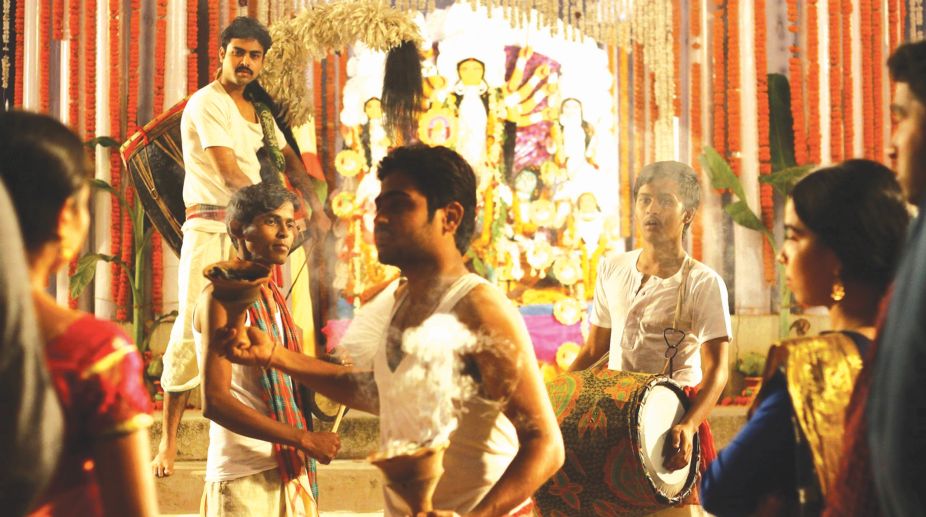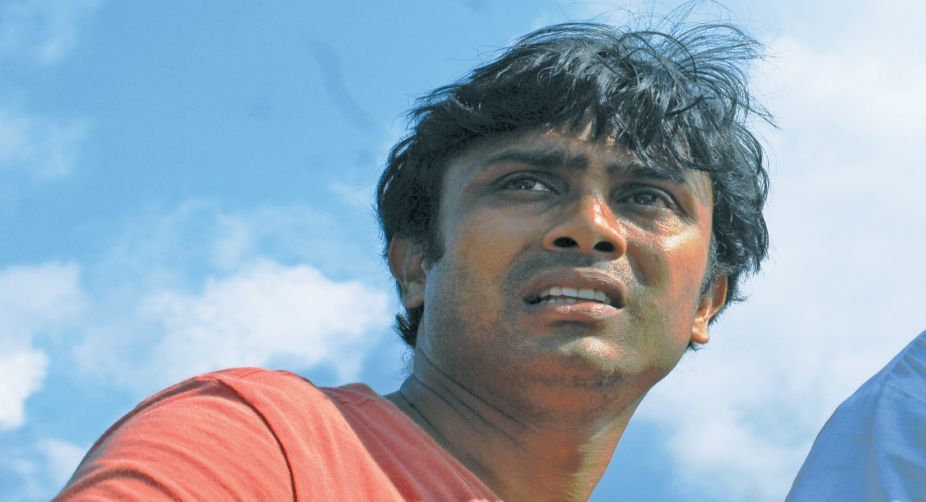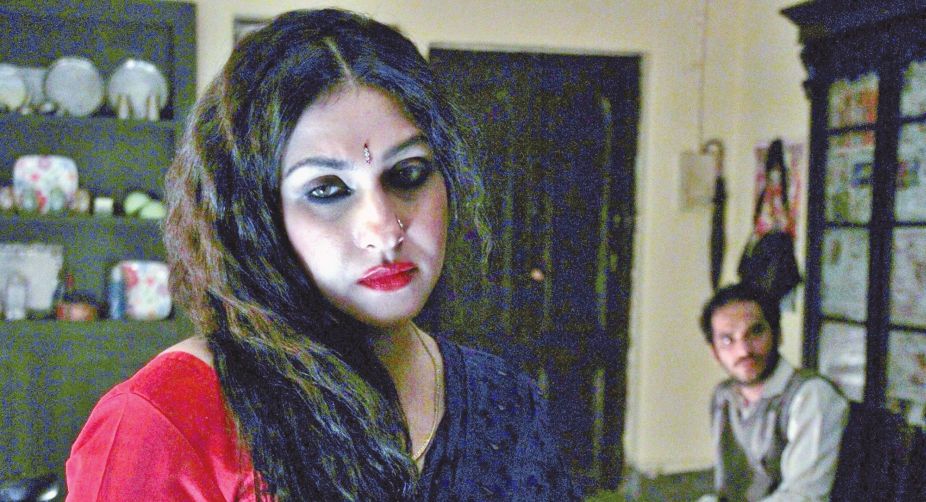Who was Manoj Bharathiraja? His life, achievements & legacy in Tamil cinema
Though he starred in several films throughout the early 2000s, many struggled at the box office. However, his performances were consistently praised.
Director Ranjan Ghosh gets talking on all things related to his latest film, Rong Beronger Kori
Shoma A Chatterji | April 14, 2018 1:53 am

A still from the film
Ranjan Ghosh began direction with Hrid Majhare a few years ago, which was a unique adaptation of a Shakespearean play. His second film, a collage of four different stories bound by how people react to money, Rong Beronger Korhi, has just been released. Produced by Rupa Dutta of Camellia Group, it has received positive press. Ghosh opens up on the film in this interview. Excerpts:
Advertisement

Advertisement
Q What triggered the concept of ‘colours of money’?
I think it happened subconsciously. I was going through a rough phase. Finances were low and the going was getting tougher with each passing day. Finding a producer was difficult.
Everyone seemed to like Hrid Majhare but that did not help in getting a producer for my next film. I kept up the discipline of writing regularly and at that time, I wrote these stories, perhaps in the winter of 2015.
Q You have credited several noted Bengali literary icons for your story. Why?
I am deeply influenced by Bankim Chandra, Sarat Chandra, Manik Bandopadhyay, Narendranath Mitra, Sunil Gangopadhyay and Bibhutibhushan Bandopadhyay. I wished to express my gratitude to them. Other influences are WS Porter, Chopin, Maupassant, Anton Chekov and so on.
The Bengali authors wrote about the struggles of ordinary people. Those stories cut across time, place, language and culture so they never get dated. At the same time, they are an integral part of Bengali legacy and our inheritance of culture and literature.
Q You have used the voice-over of ‘the world’ as an anchor and bride to tie the stories together. How do you explain this?
I thought that the narration should be done by a woman since woman is the originator. She is the wife, mother, sister and daughter. I think that the Earth we live in is our only protector.
That is why we call her Mother Earth or Dharitri or Vasundhara. In the beginning of her narration, the Earth mentions the Moon as her brother and the Sun as her husband. So, in her story, too, there are three characters as there are in the four stories in this film and this narration and voice-over functions as the thematic link.
Q How much freedom did your producers give you as a director to put forth and execute the film?
I am extremely grateful to my producer Rupa Datta of Camellia Productions for not interfering with the execution of my film. She gave me total freedom in all the artistic domains — story and screenplay, casting, costume, locations, make-up, production design and art. I could create my own film without anyone looking over my shoulder, trying to correct this thing or that, thankfully!
Q The colours — red, blue, golden and white — form the titles of your stories. What do they mean?
Red is the colour of love and togetherness. Blue is the colour of separation and death. Golden is the colour of transaction and profit while white is the colour of loss. The four stories bear this out quite lucidly, if you notice.
Q What brief did you give to your music director? The music is brilliant and contextualised against the geographical backdrop and the season in context.
I had decided on the instruments to be used for each of the four stories beforehand. The first story revolved around a tribal couple. So I decided to use the flute and the mridangam.
The second story dealt with a brick-kiln owner and the sound track was dominated by the esraj and viola. As the third story involves a prostitute and her client, I felt the sarangi would be ideal.
The fourth story is about a young dhaki and his sick mother. So, the dhaak and dhol were the predominant instruments. Fortunately, Debajyoti Mishra, the music director, and I share the same sensibility about film music and that helped. Besides, he is a maestro. We had decided to use background music sparingly and it seems to have worked well in tune with the narrative.

Q You seem to have chosen your locations for the stories with care. Please tell us where you shot.
The first story was shot in a tribal village in Burdwan, an hour and a half from Bolpur. The second story was shot in Panihati and further up north into the district. The third was shot on Park Street and Kalighat; while the fourth was shot in a village in Birbhum.
Q How did you decide on the casting?
I already had a few actors in mind while I was working on the script. Sometimes, you can visualise which actor will fit which character when you are writing the story or screenplay.
I also discussed some of these things with my producers Rupa and Nilratan Datta and with our creative consultant, Aparna Sen. She helped me get Ritwick on board and also spoke to Rituparna and Soham.
Q How easy or difficult was it to direct veteran actors like Rituparna, Chiranjeet, Ritwick, Soham, Kharaj and so on considering you are still a new entrant into direction?
The actors are veterans and this came across in their attitude towards me. They were warm and welcoming and put me completely at ease. It was a healthy collaboration.
At times, they would come up with minute detailing about their characterisations but they mostly went along with my brief and directions. Good actors that they are, they are keen on doing good work. For me, it was a great learning experience.
Q What contribution did Aparna Sen make?
My producer calls her creative consultant but I call her mentor. She has also been the creative producer — a bridge between my producer and me. She ensured that I got what I needed to create the film.
She had gone through the screenplay, costumes, make-up, art suggestions, et al and shared valuable inputs. But she made it absolutely clear that this was my film and her suggestions would not be binding on me. That was her grace.
Q Are you content with what you have done? If not, what would you have done differently?
I am never content with anything I do. As I am very subjective about the film, it is very difficult for me to put a finger on its strengths and weaknesses. If I had the opportunity to do things differently, I think I would have taken a few more days to shoot the film. This one I did in ten days.
Q How would you describe your approach towards cinema?
Cinema is my only religion and the only God I know. My producers have put in quite a bit of money and have taken a risk to support this film, which is completely off the beaten track. If the audience supports us, we will be encouraged to create such films again in future.
Advertisement
Though he starred in several films throughout the early 2000s, many struggled at the box office. However, his performances were consistently praised.
Rashmika Mandanna keeps her InstaFam entertained with her lovely social media posts. The diva took to her Instagram account and urged everyone to be positive and 'a little more kinder'.
Veteran filmmaker Shyam Benegal passed away at the age of 90 in Mumbai on Monday. Members of the film fraternity shared their condolences on social media in light of the demise of the cinema legend.
Advertisement
